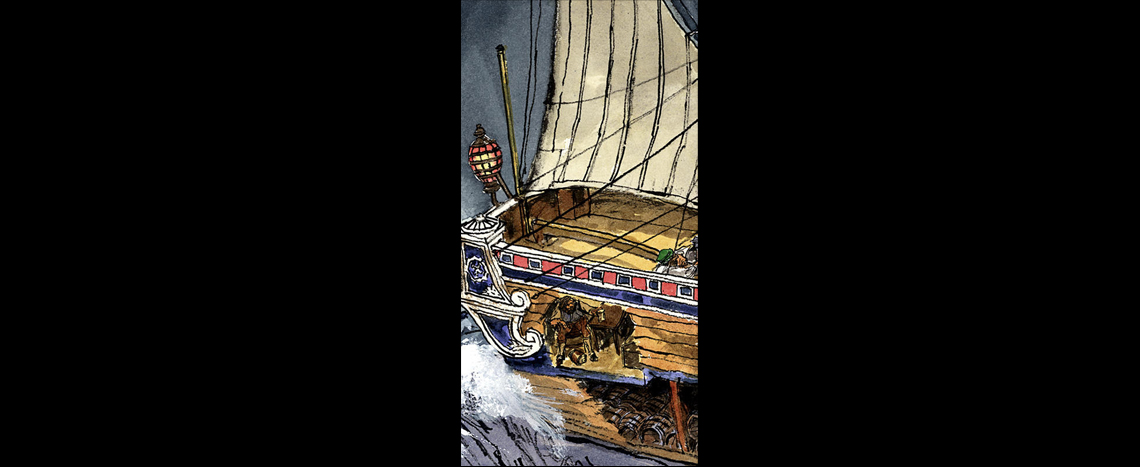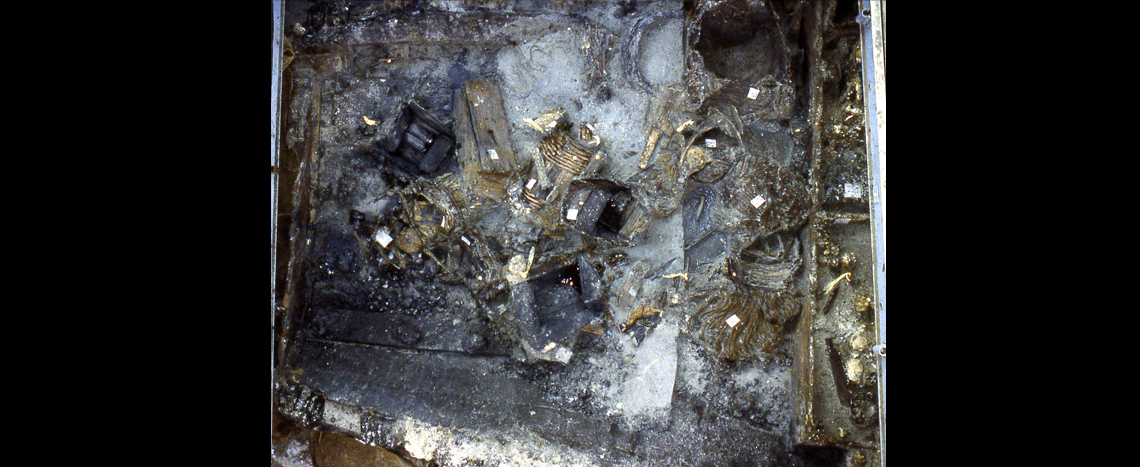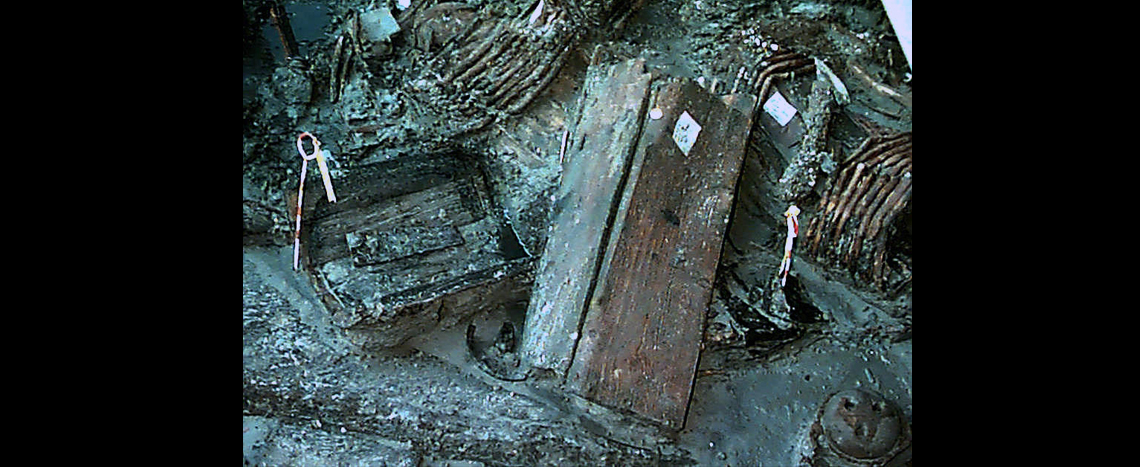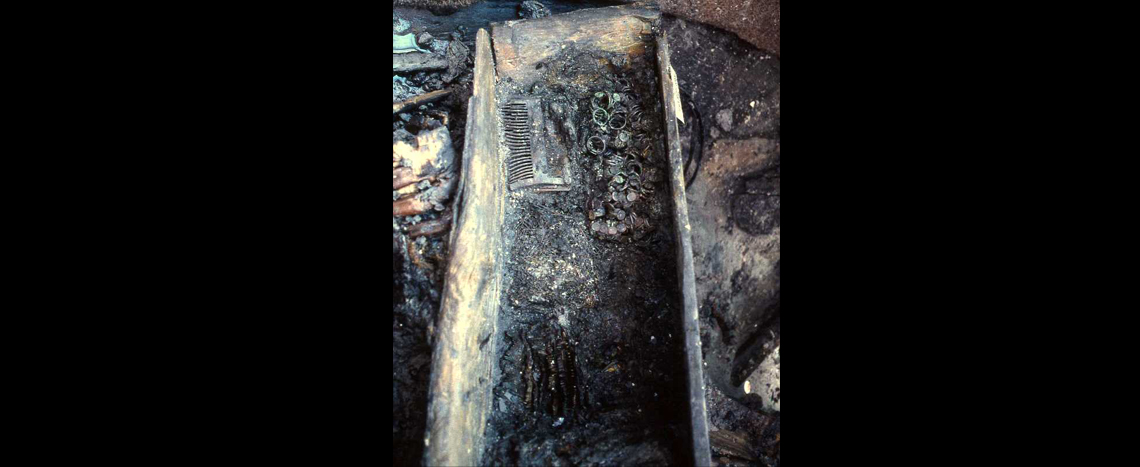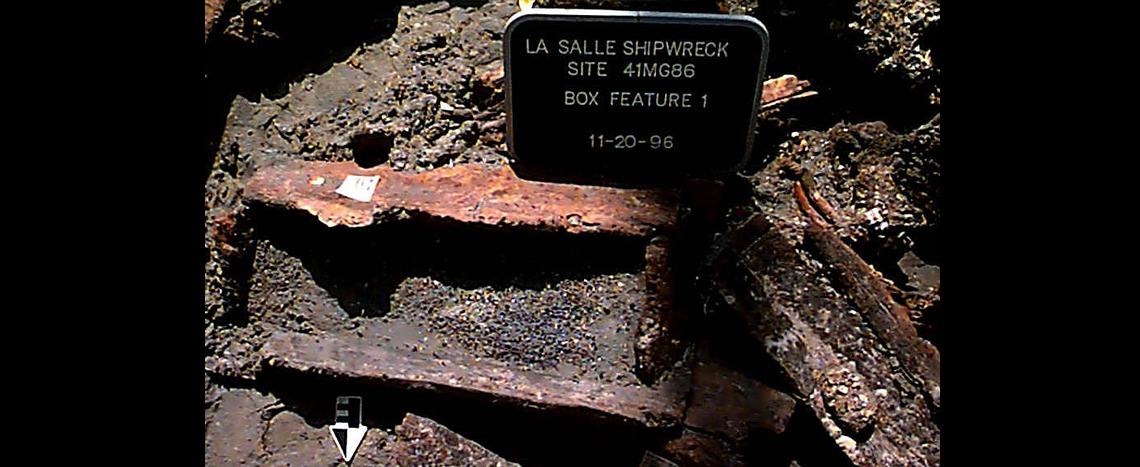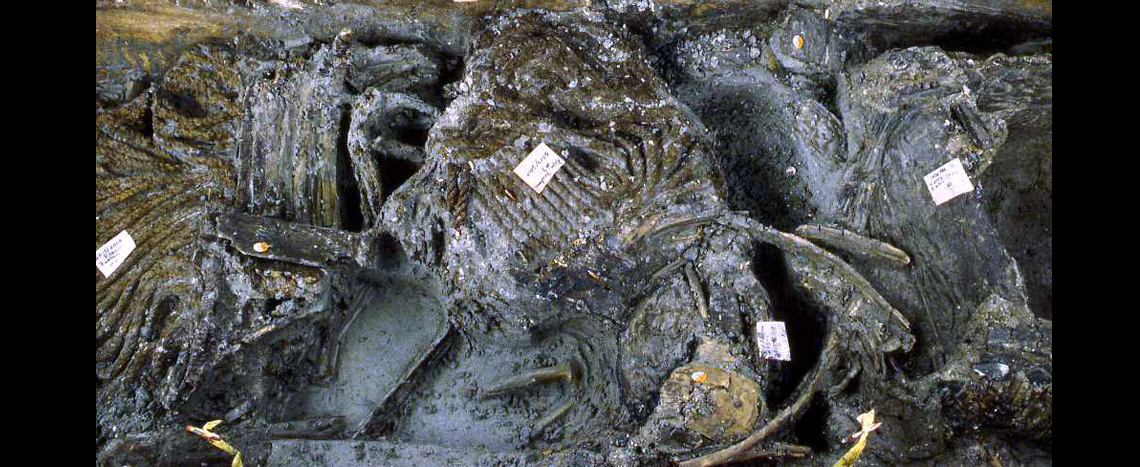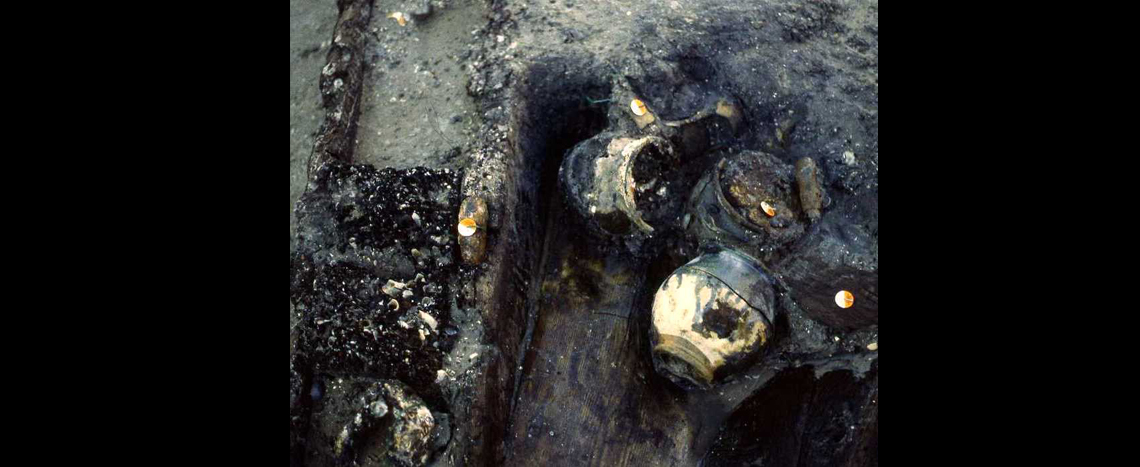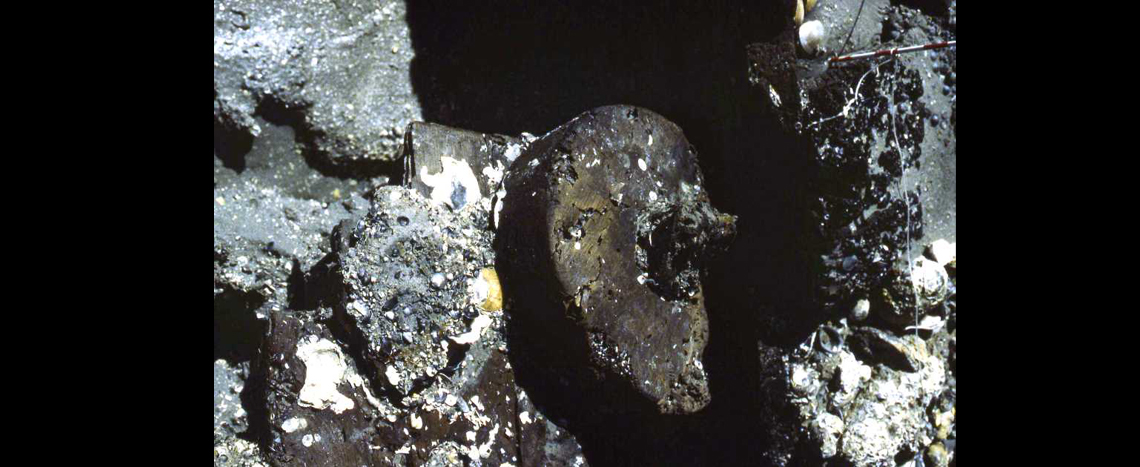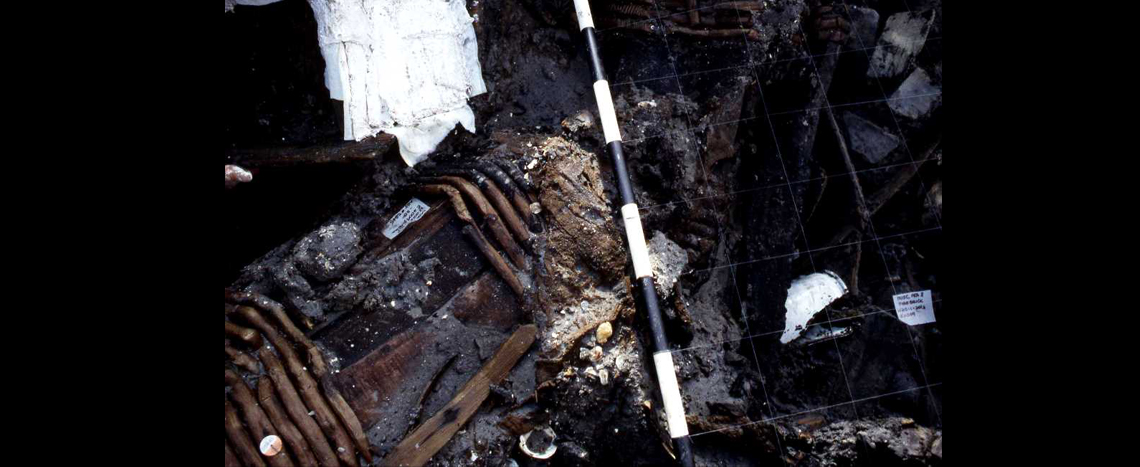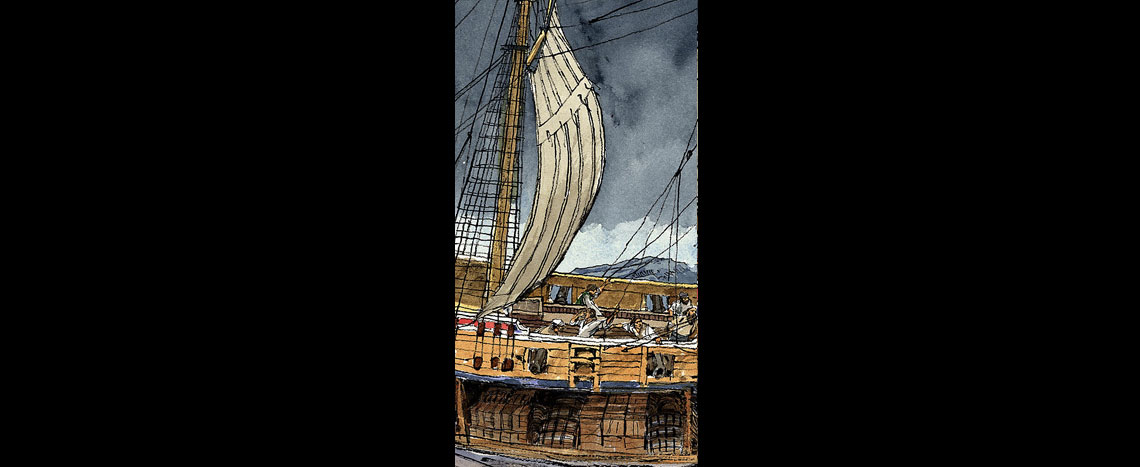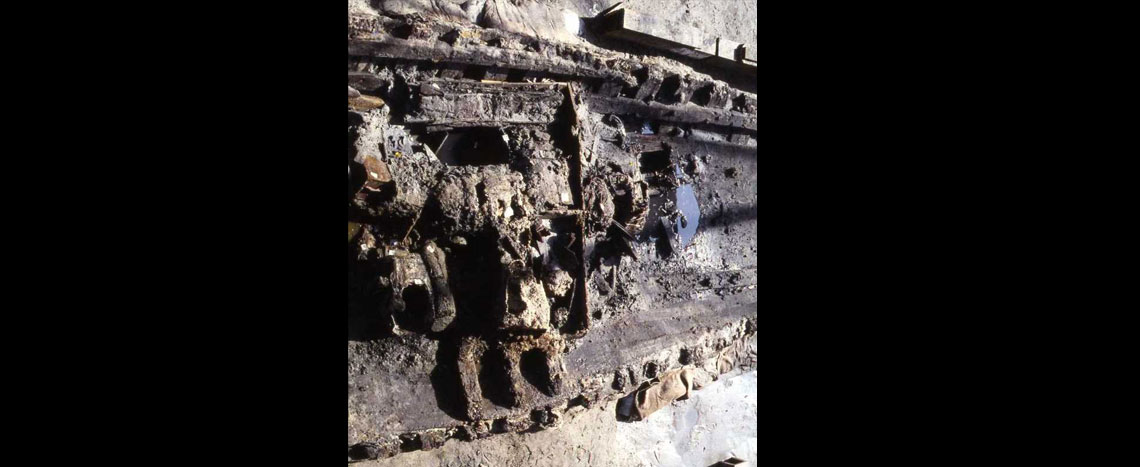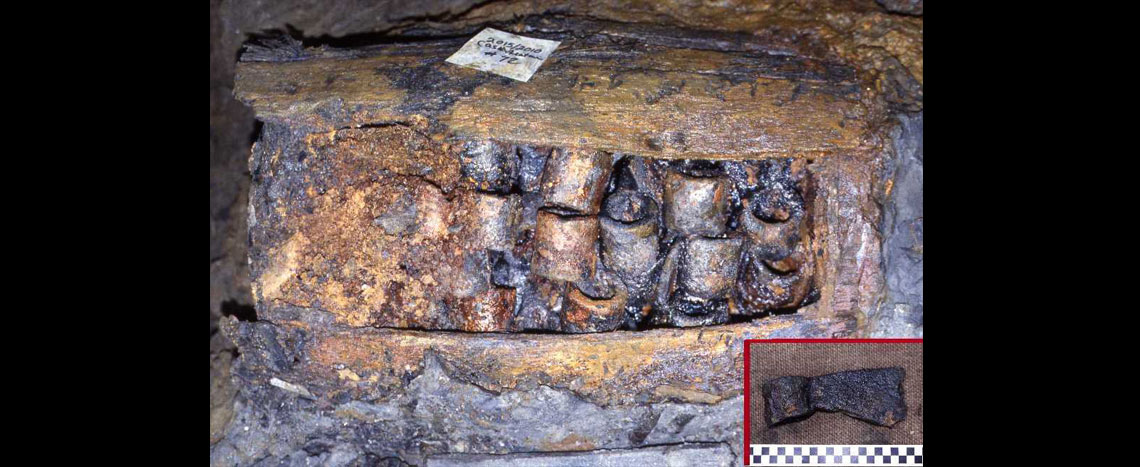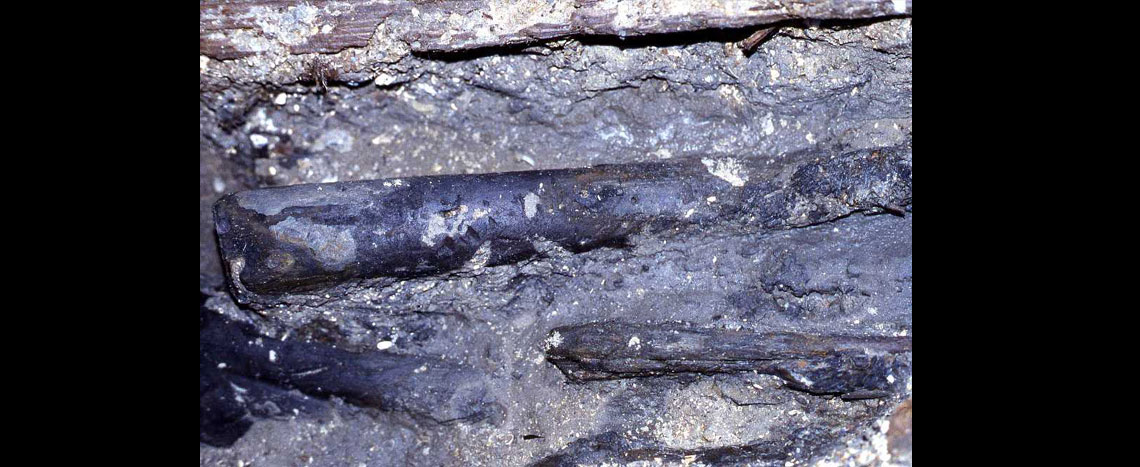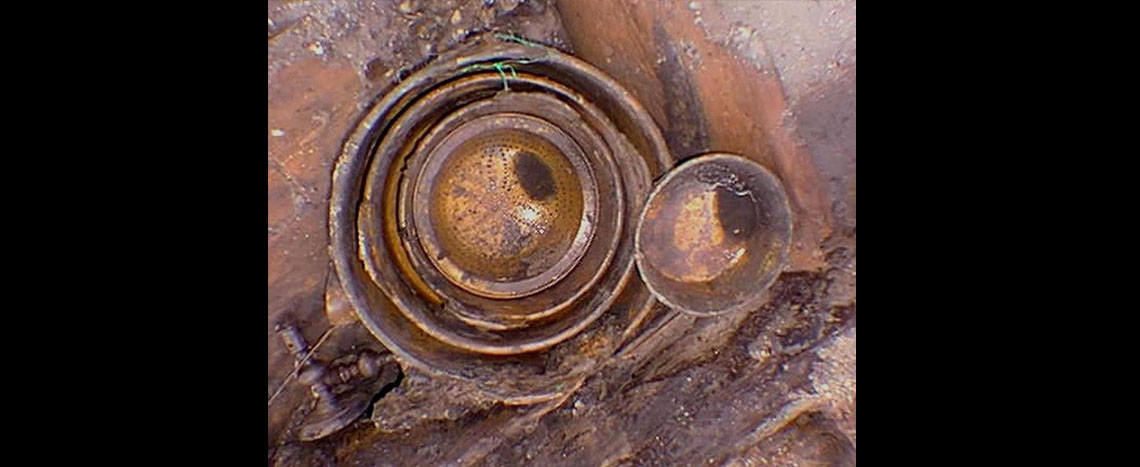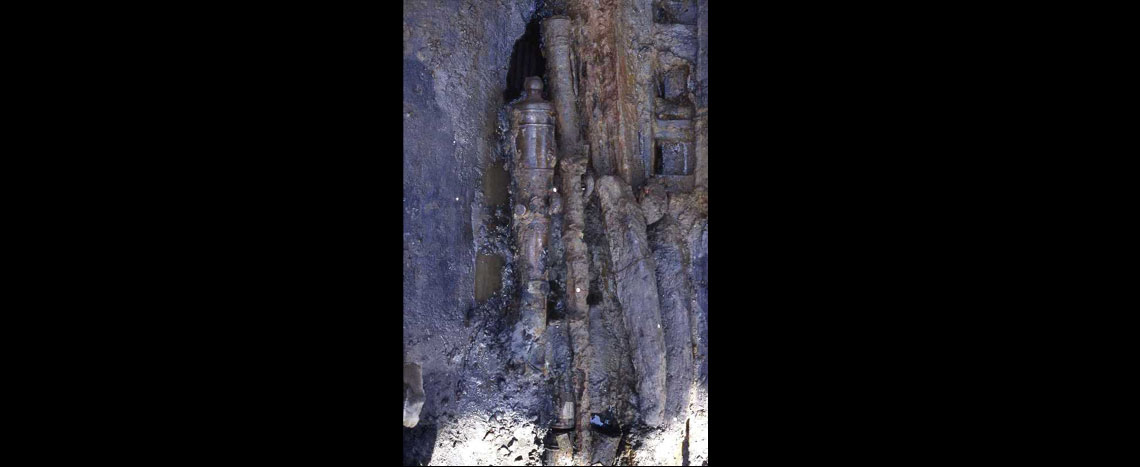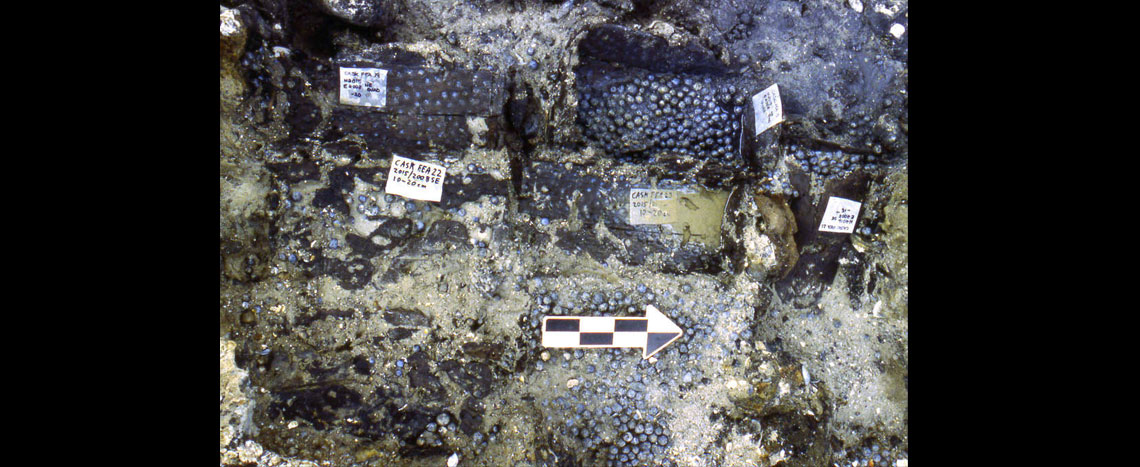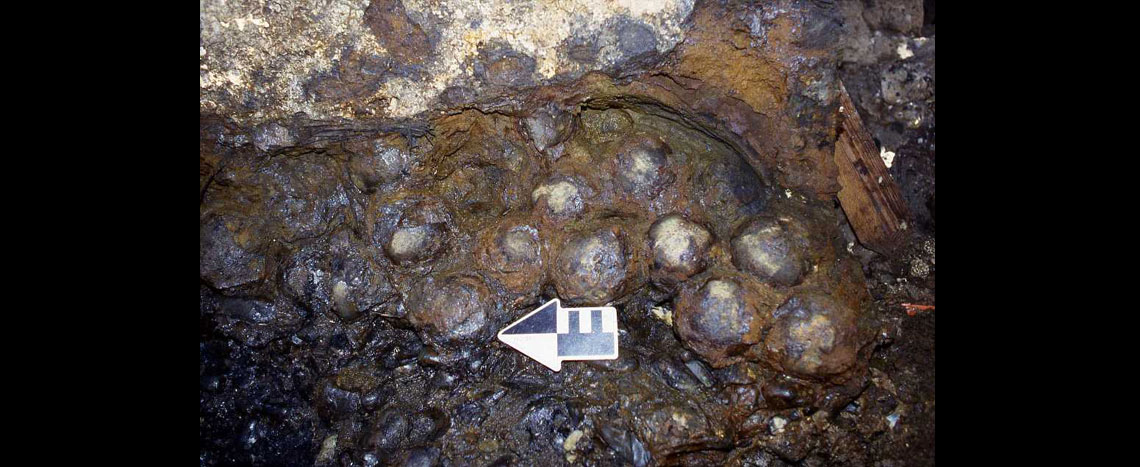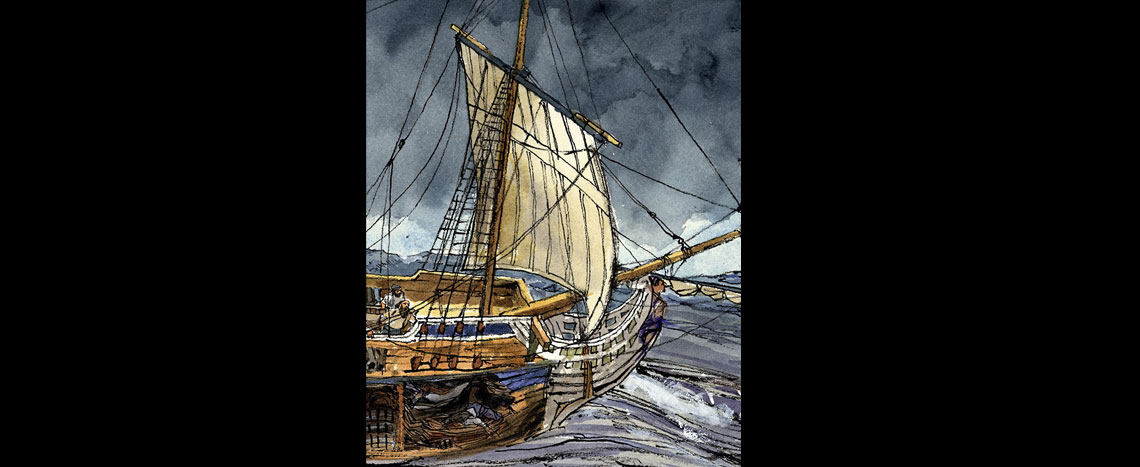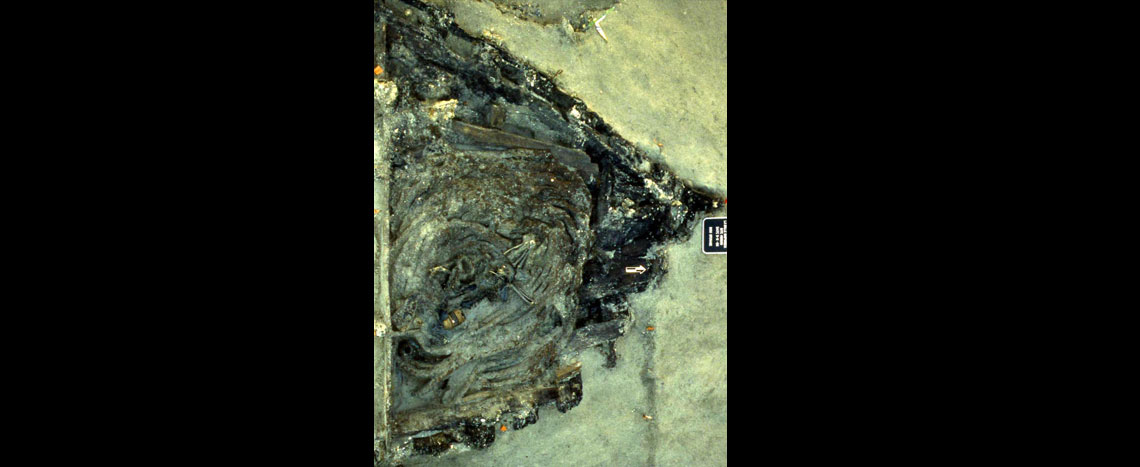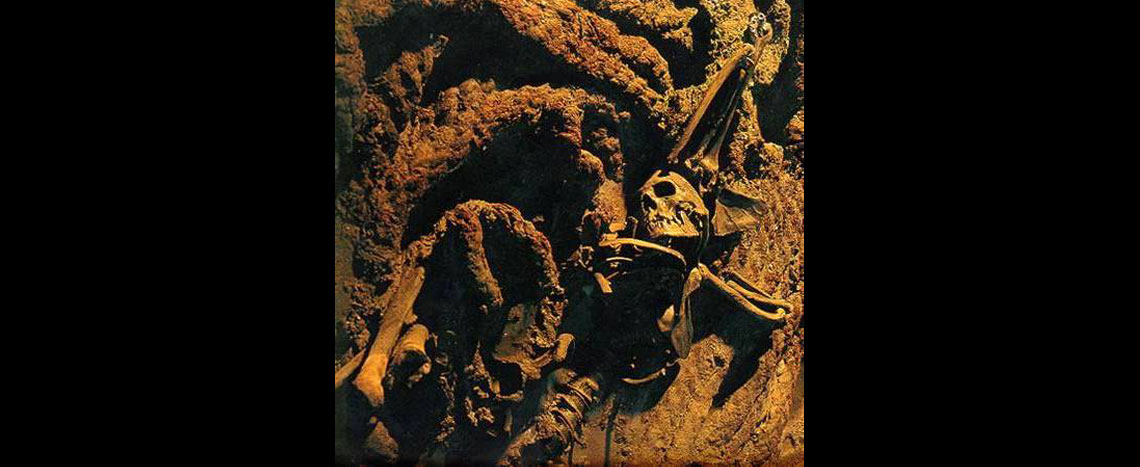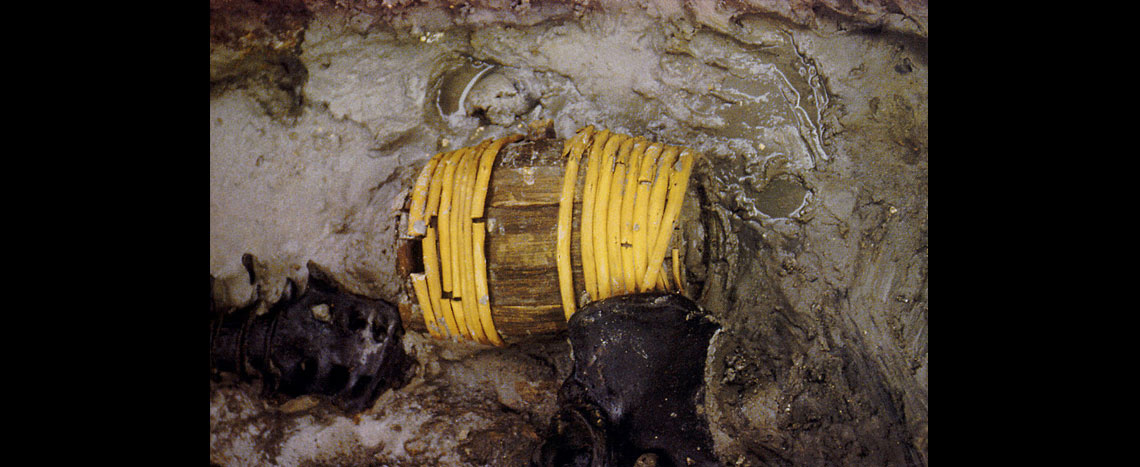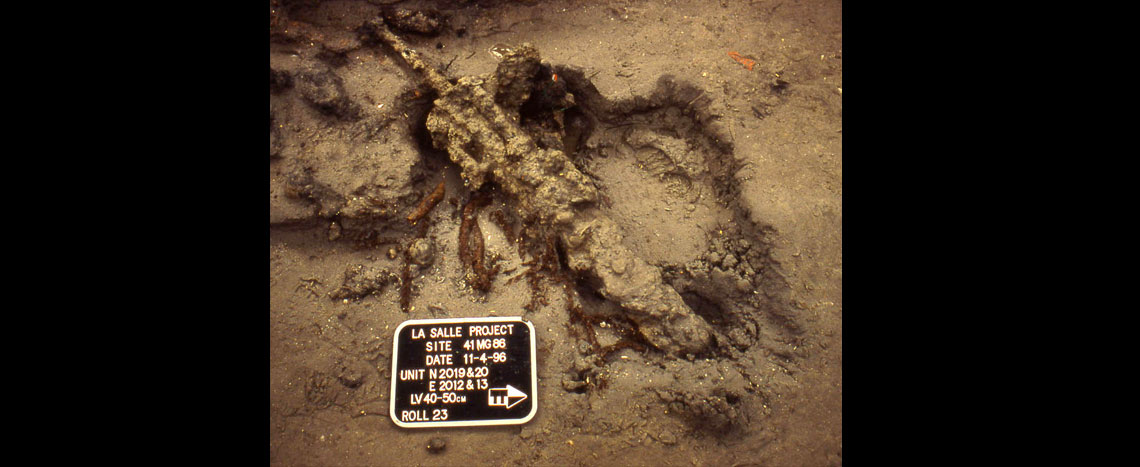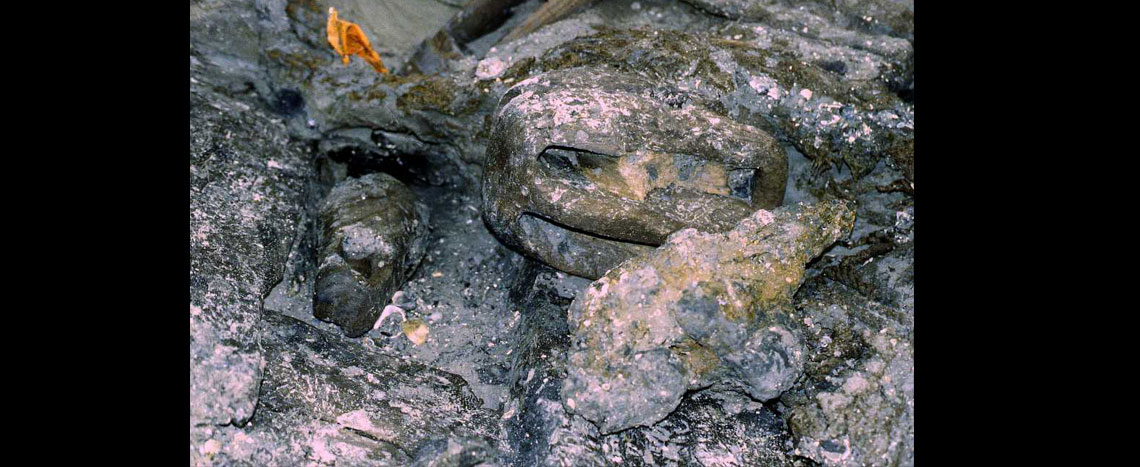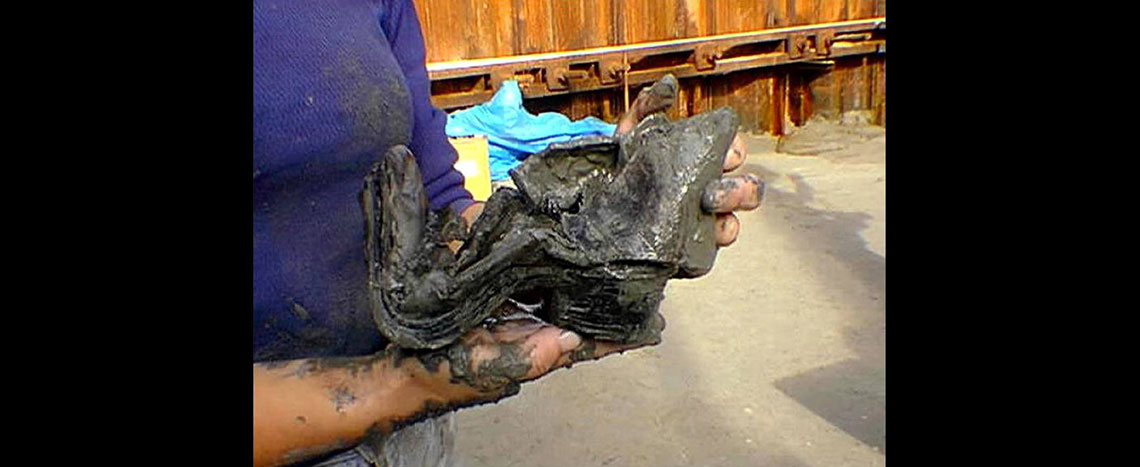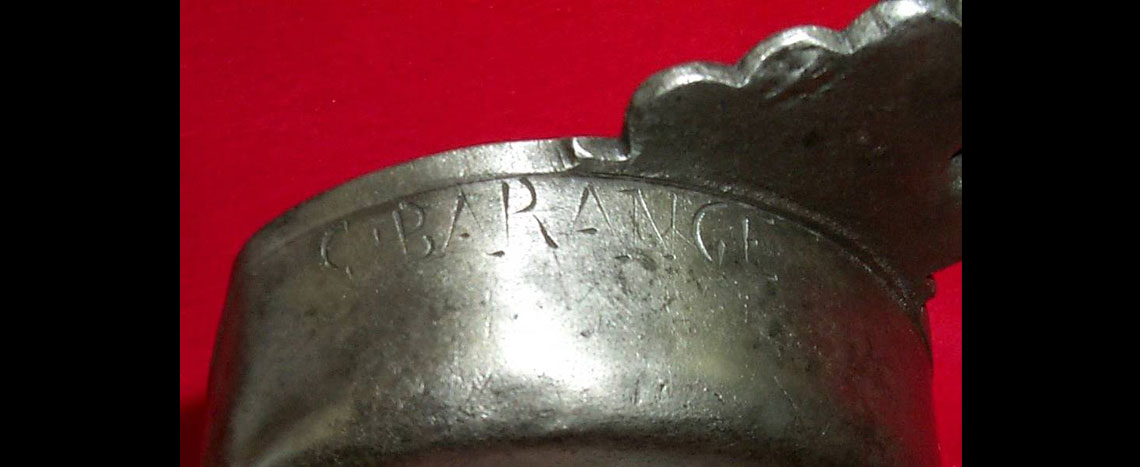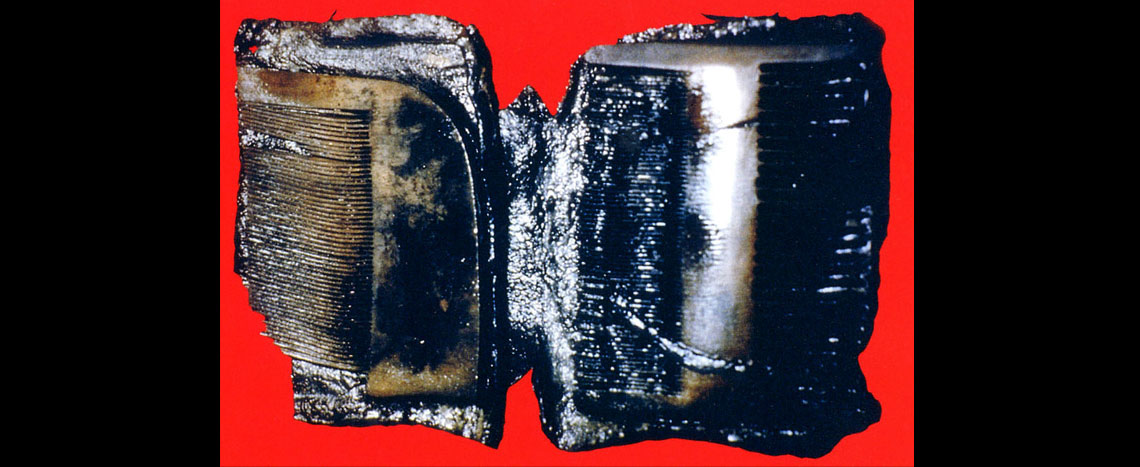Excavators working on the shipwreck found that a major portion of the hull was still intact, with much of the cargo preserved. Remarkably, many of the wooden barrels, casks, and boxes were still packed in the compartments, just as La Salle's crew had placed them some 300 years before. Here were the ingredients for creating a colony in the new world: tools to fell trees and construct buildings; food, dishes, clothing and other supplies for daily life; weaponry for defense and hunting; and small, glittering items intended for trade with the native peoples. The ship's hull itself carried a trove of clues, large and small, about shipbuilding and sailing in the 17th century. It was dismantled timber by timber to be brought to shore, reassembled, studied, and preserved. To the archeologists, La Belle was a treasure far more valuable than gold or silver. Explore the drawing above to see what the archeologists uncovered.
Aft Hold
In this rear compartment, the archeologists made a remarkable discovery. Amid coils of rope and brass wire, ammunition, and other items, they found two wooden boxes filled with the items La Salle had hoped to use for bartering with native peoples in the New World. According to Principal Investigator James Bruseth, these small “trader” chests, brimming with diminutive objects of metal and glass, are unique in North American archeology. Packed inside the first box were hundreds of brass Jesuit rings tied together with string along with stacks of wooden combs, cans of small round mirrors, and dozens of knives. The second box contained some 600,000 glass beads—white, black, and cobalt blue—still strung on their original thread and wrapped around a piece of rope to bind them in place.
This treasure represented a substantial expenditure paid for personally by La Salle and his men, as the French king did not provide funds for trade goods.In addition to the two boxes, archeologists also uncovered 22 wooden barrels in the aft hold, along with rope and coils of brass wire, the “duct tape” of the time. After excavating and removing the jumbled cargo, archeologists found another layer of remains at the bottom of the aft hold: bricks from the cooking galley, empty wine bottles, animal bones, eating utensils, and game pieces. Crewmembers had gathered in this small, makeshift cooking galley to have meals, play games, and escape the cold, likely while the ship was anchored for months in Matagorda Bay.
Main Hold
The main, or forward, hold, contained a remarkably intact trove of cargo: 63 wooden casks and 7 crates, still tightly packed in place and filled with an array of items. From household materials and construction tools to glimmering trade goods, these were the supplies intended for the Mississippi River colony that La Salle had ordered loaded on board La Belle in 1685, shortly before the vessel was wrecked in the bay. Munitions also were laid in, including two bronze cannons, cannonballs, swords, flintlock muskets, and barrels containing hundreds of pounds of lead shot. The main hold also housed equipment critical to ship operations, such as pumps for removing water from the bilge.
Bow Hold
The bow compartment of the ship was used by sailors as a place for rest, one of the few areas where they could escape the elements. When the opportunity arose, tired sailors crawled through the deck hatch into the cramped bow quarters, where hammocks or wooden bunks may have been positioned. It was in this forward hold that archeologists made their most poignant discovery. Atop a coiled mound of anchor rope, the skeletal remains of an unknown Frenchman lay sprawled face down, elbows splayed outward. Near him were a pewter salver, or wine-tasting cup, stamped with the name, "C. Barange", and a leather pouch containing two combs. A single leather shoe and a wooden cask, perhaps once containing water, lay close by. A Jesuit ring was found among the hand bones and nearby, several wooden beads. Despite a variety of attempts to discover the sailor's identity, we may never know whether the skeleton was an individual known as C. Barange, nor the circumstances of his death. Attempts to extract DNA from the remains were unsuccessful, largely because of destruction by marine creatures.
A reconstruction of his face, however, by a University of Michigan medical artist, provides us an idea of what he may have looked like. (See Treasures of La Belle section for photo and detail.) In "From a Watery Grave, The Discovery and Excavation of La Salle's Shipwreck, La Belle," authors James Bruseth and Toni Turner imagine what the end was like for him: "The archeological evidence portrays a miserable sailor desperately clinging to life, probably lying on one of the wooden bunks overlooking the anchor rope in the bottom of the bow. It is likely he died before the ship sank. After the wreck, his body was dislodged from the bunk and dropped to the bottom of the bow, settling directly on the coiled anchor rope, with his empty water cask falling next to him." Three-hundred years after his lonely passing, the unknown sailor has now gained a measure of respect and even notoriety. On February 3, 2004, his remains were buried with honor at the state cemetery in Austin.Officials from Texas, the United States and France were in attendance, along with a cadre of archeologists who helped recover his remains from the sea. (For more on the sailor's burial, see the Texas Historical Commission's Photo Album
